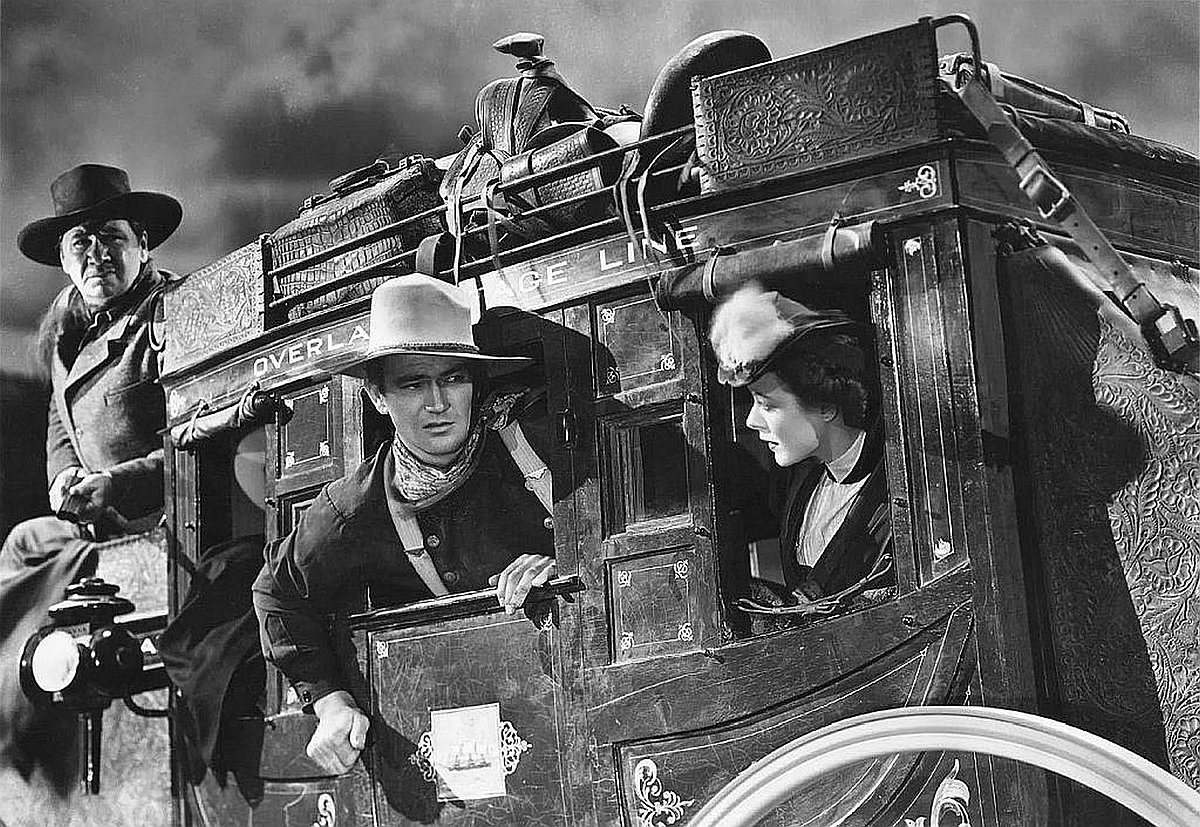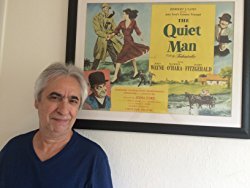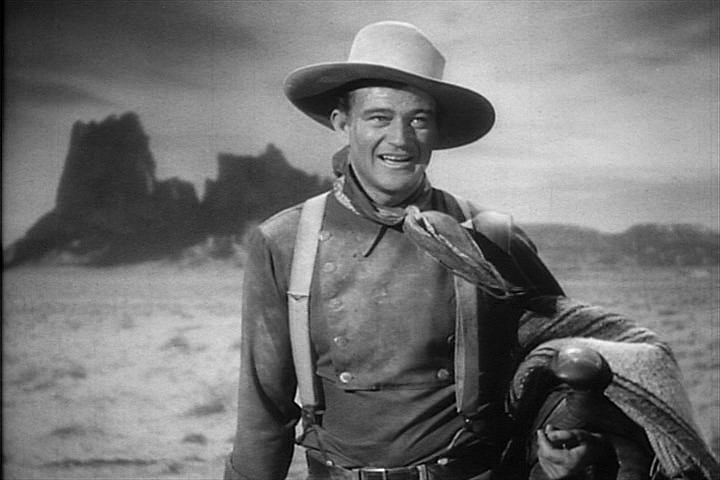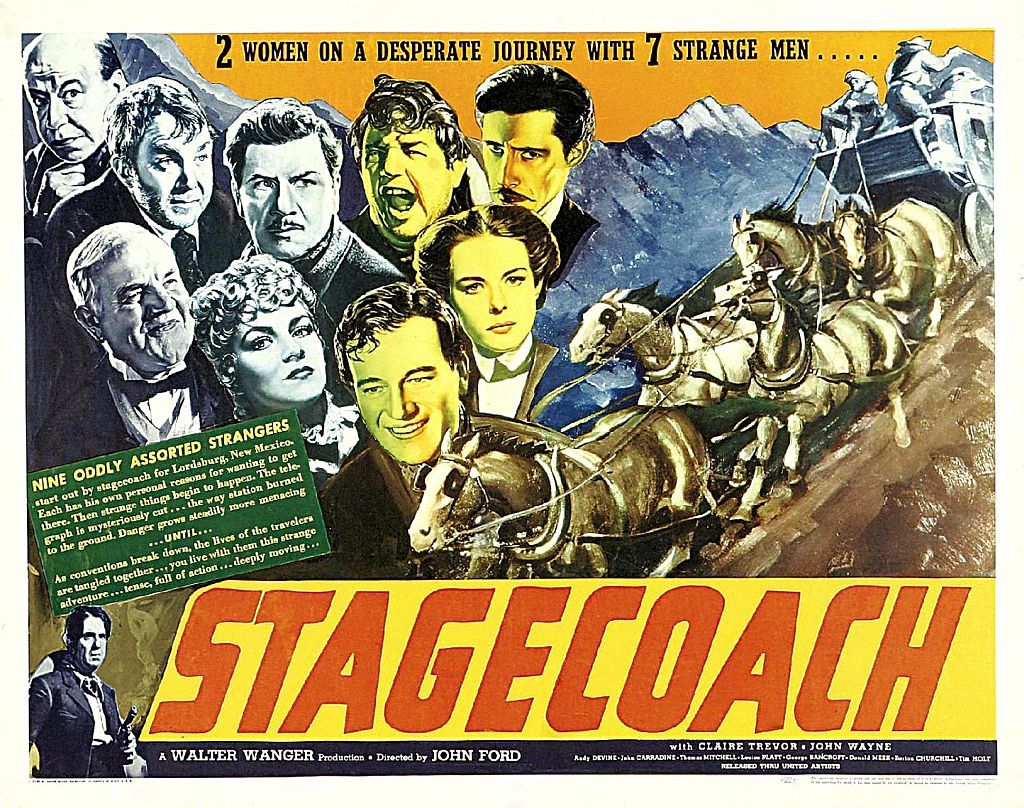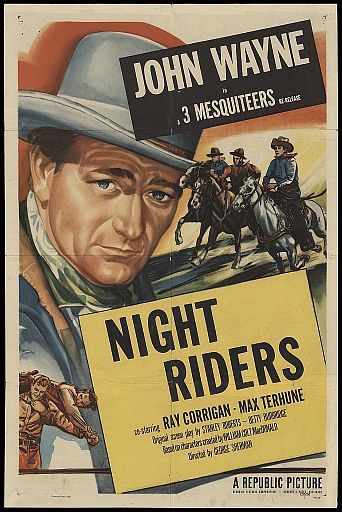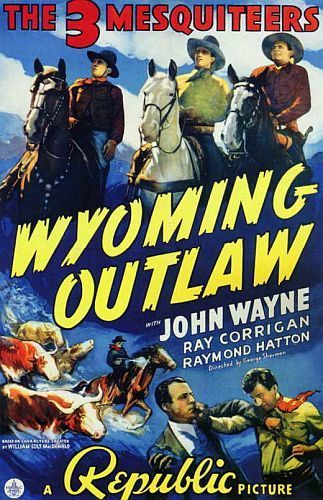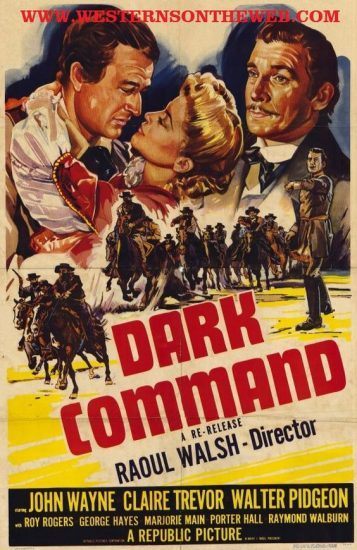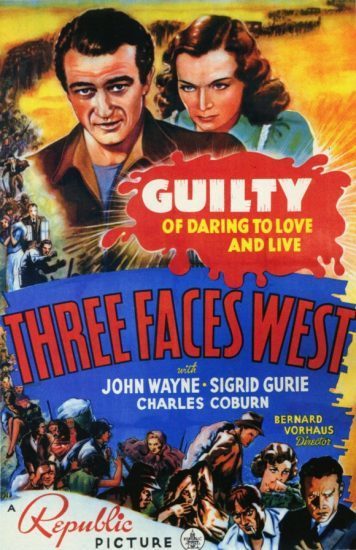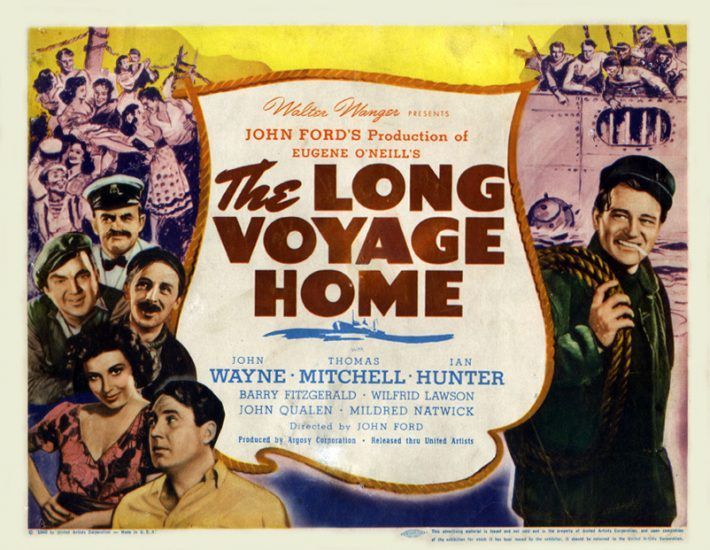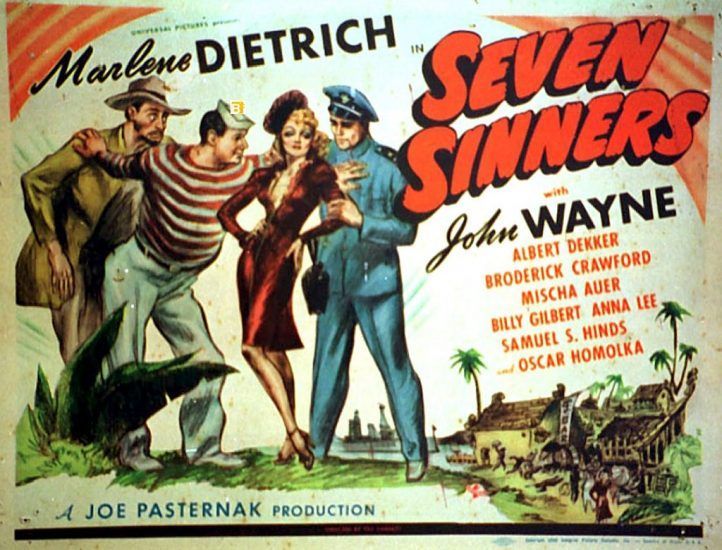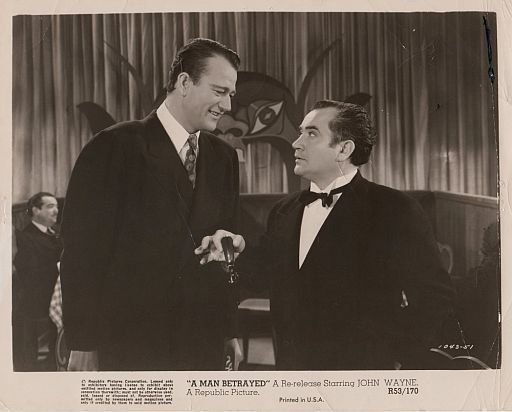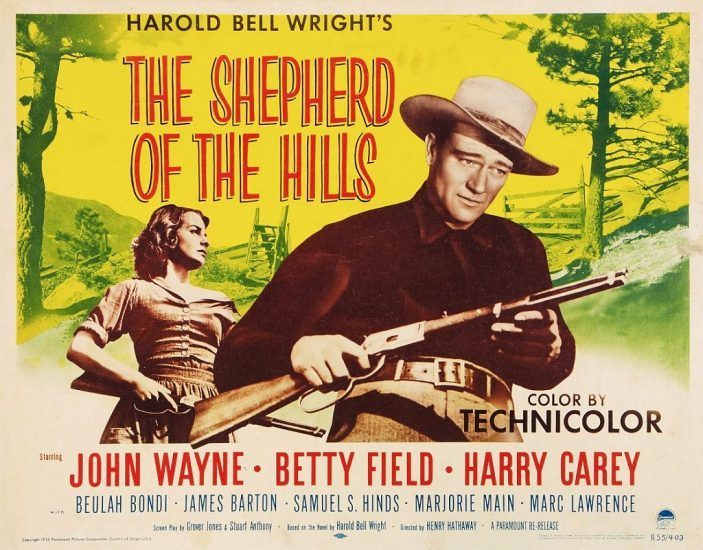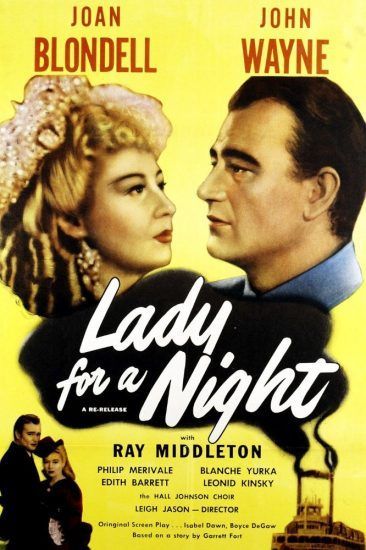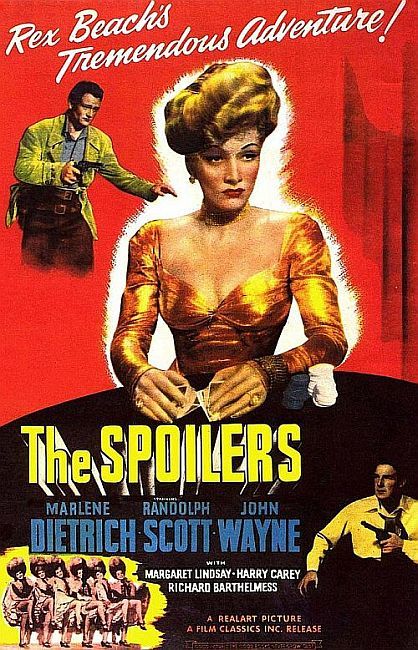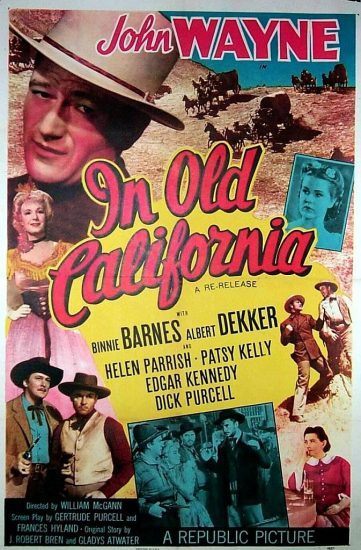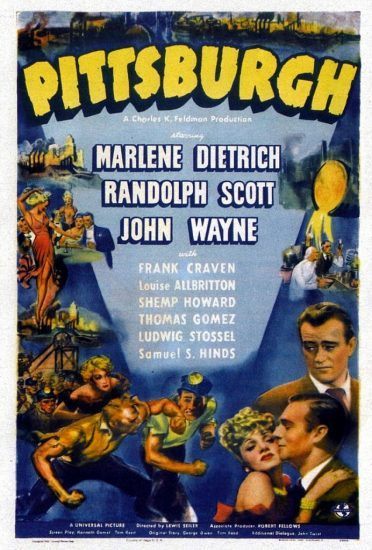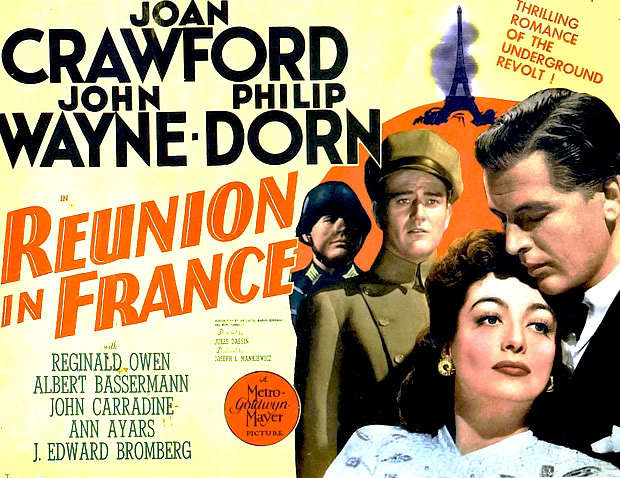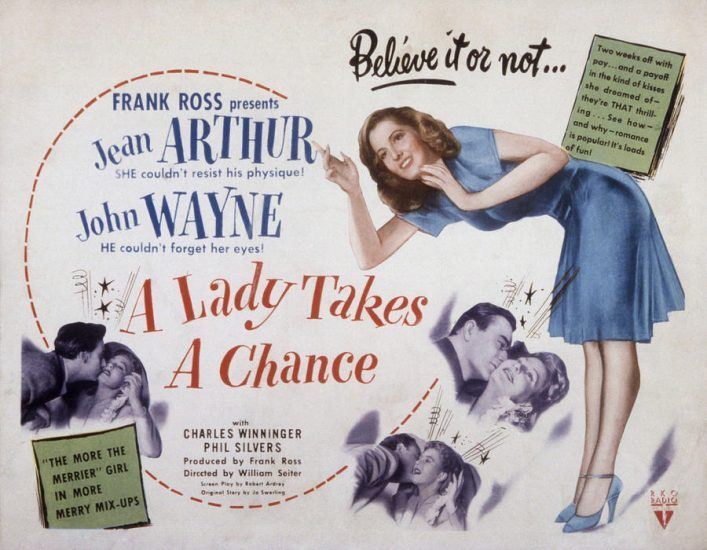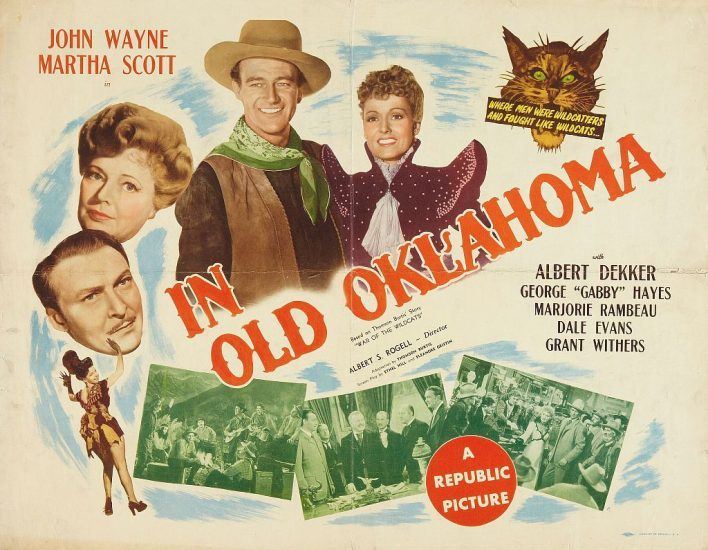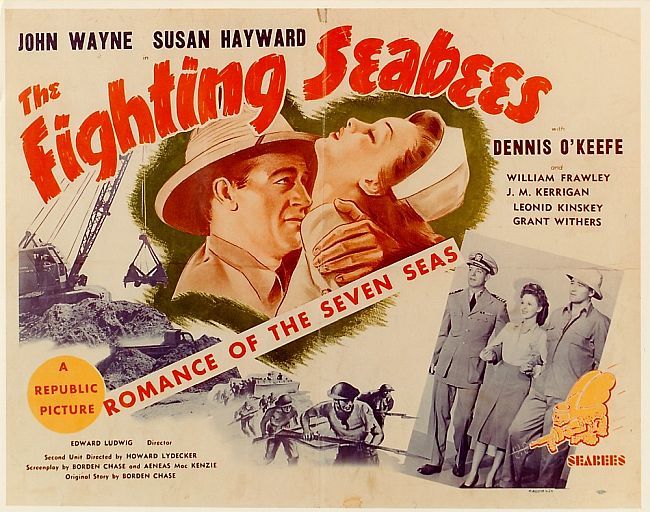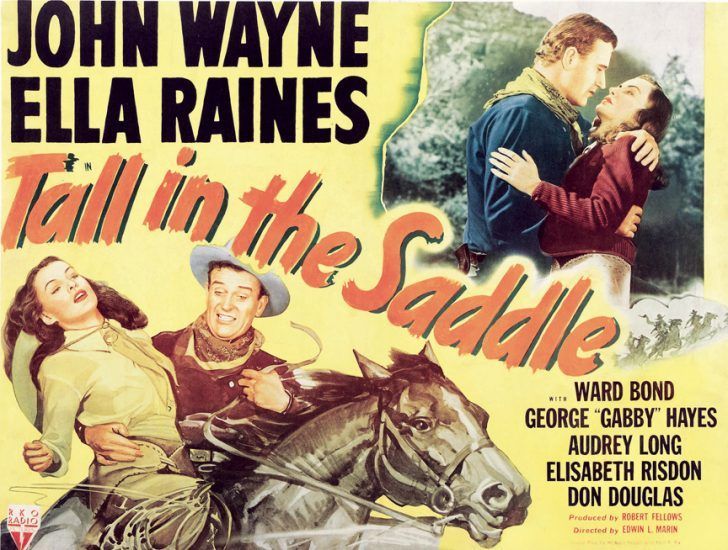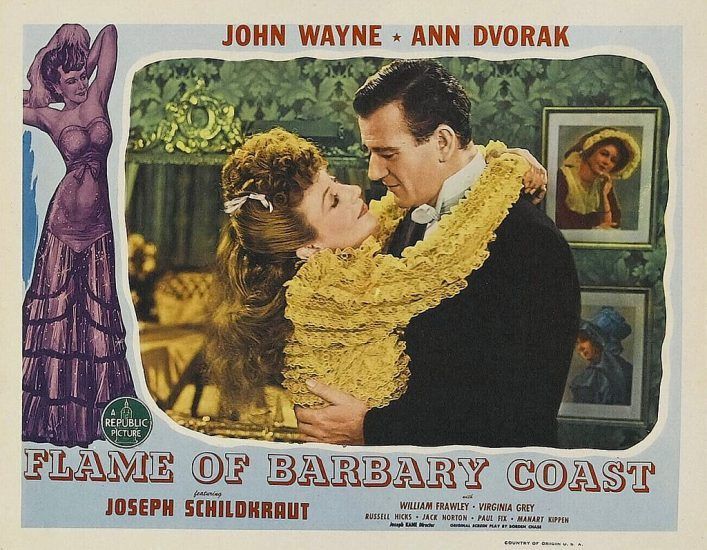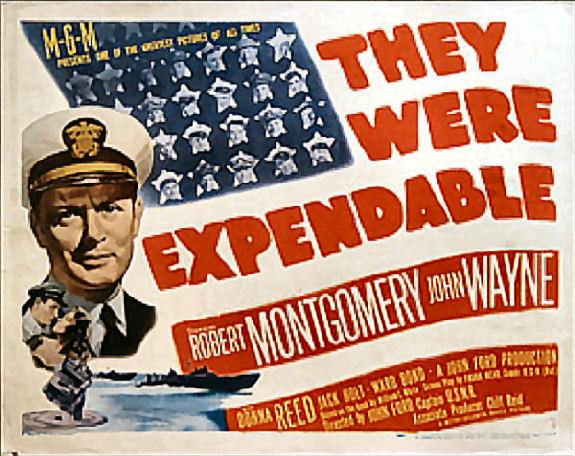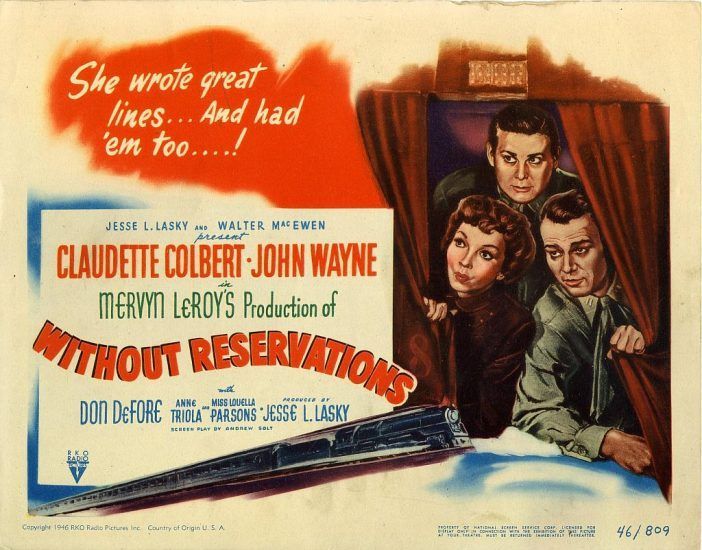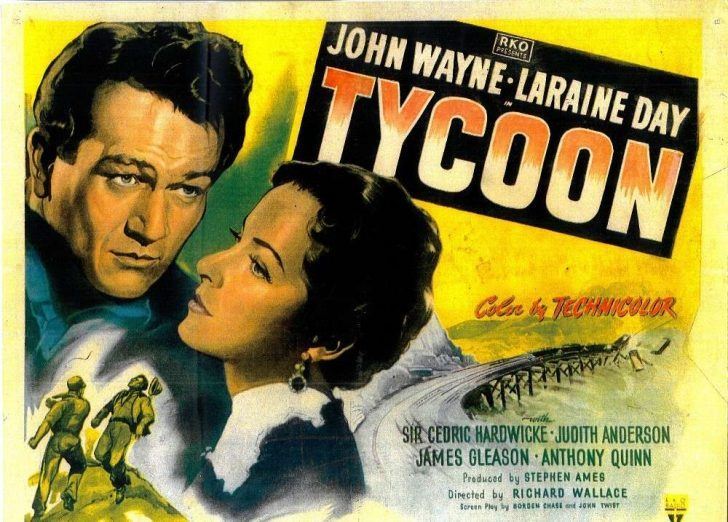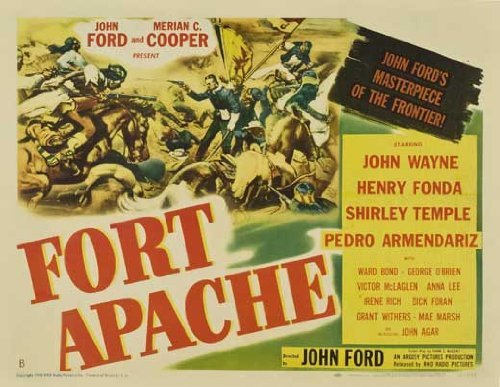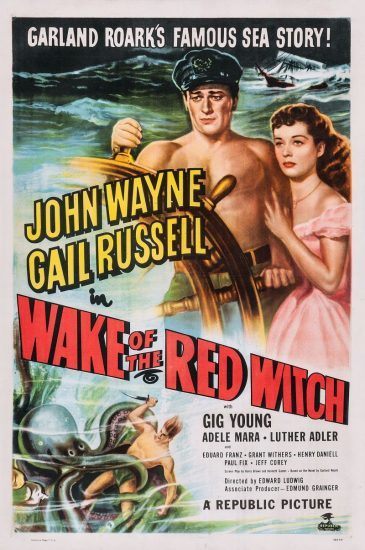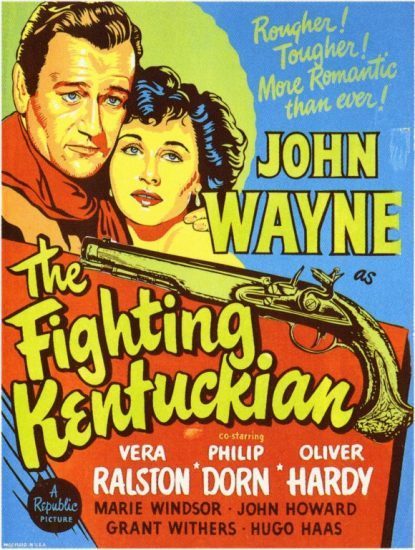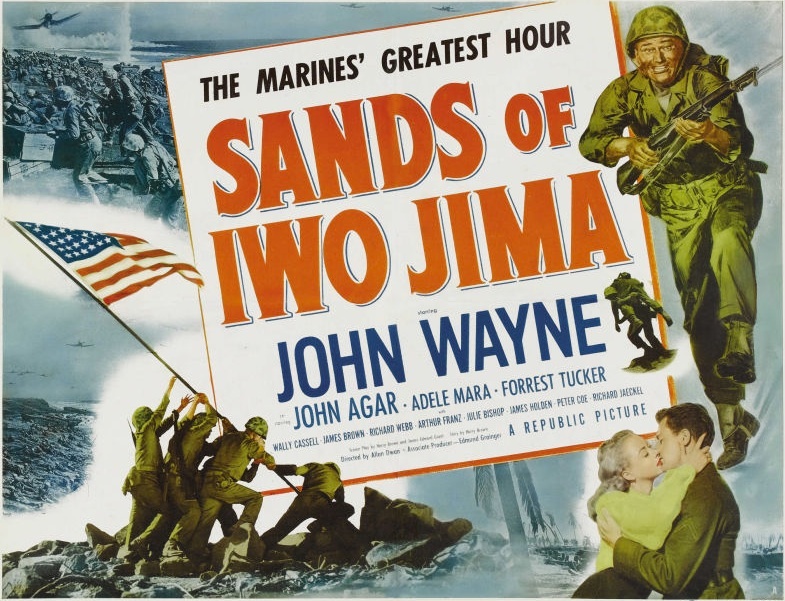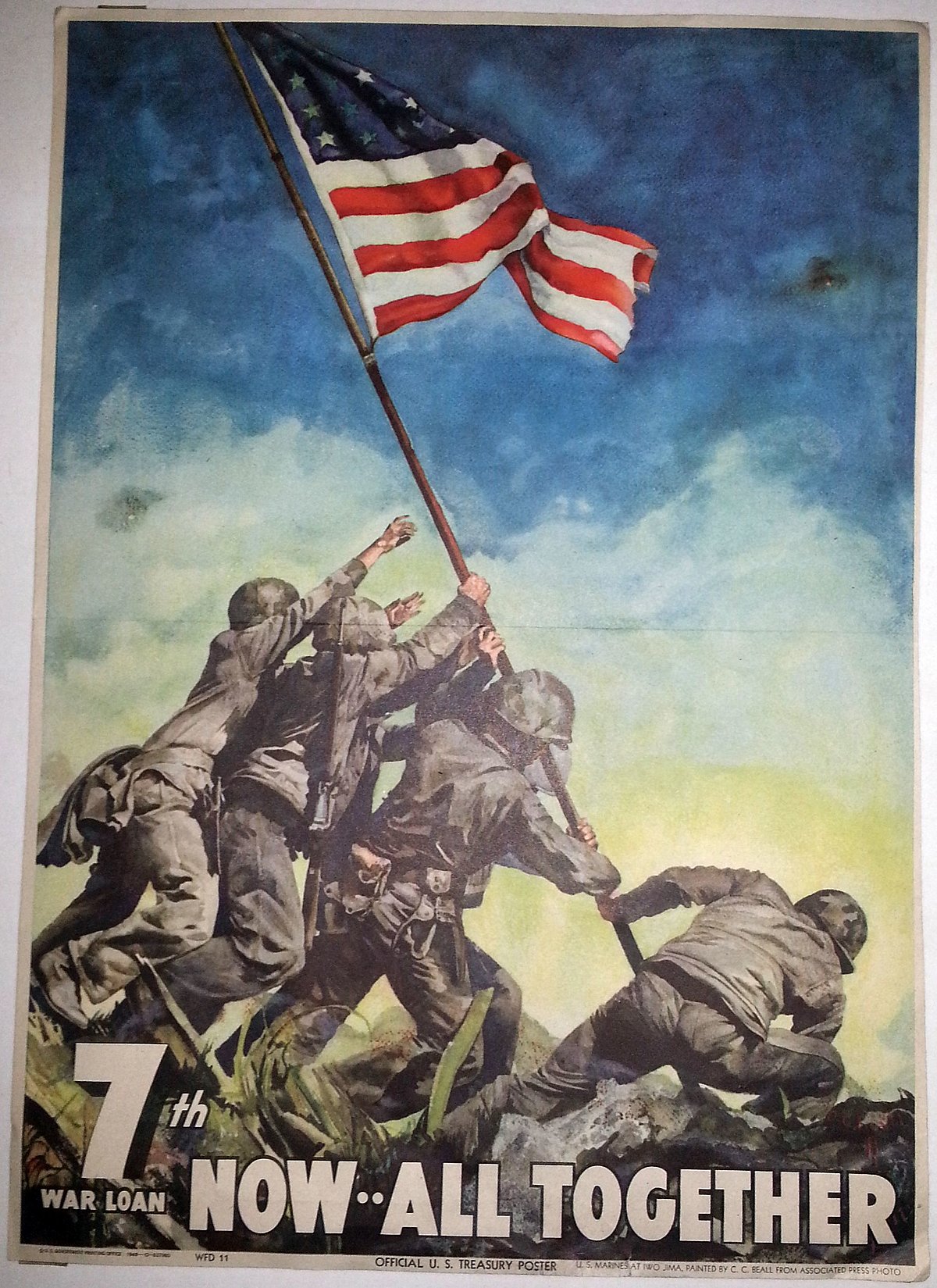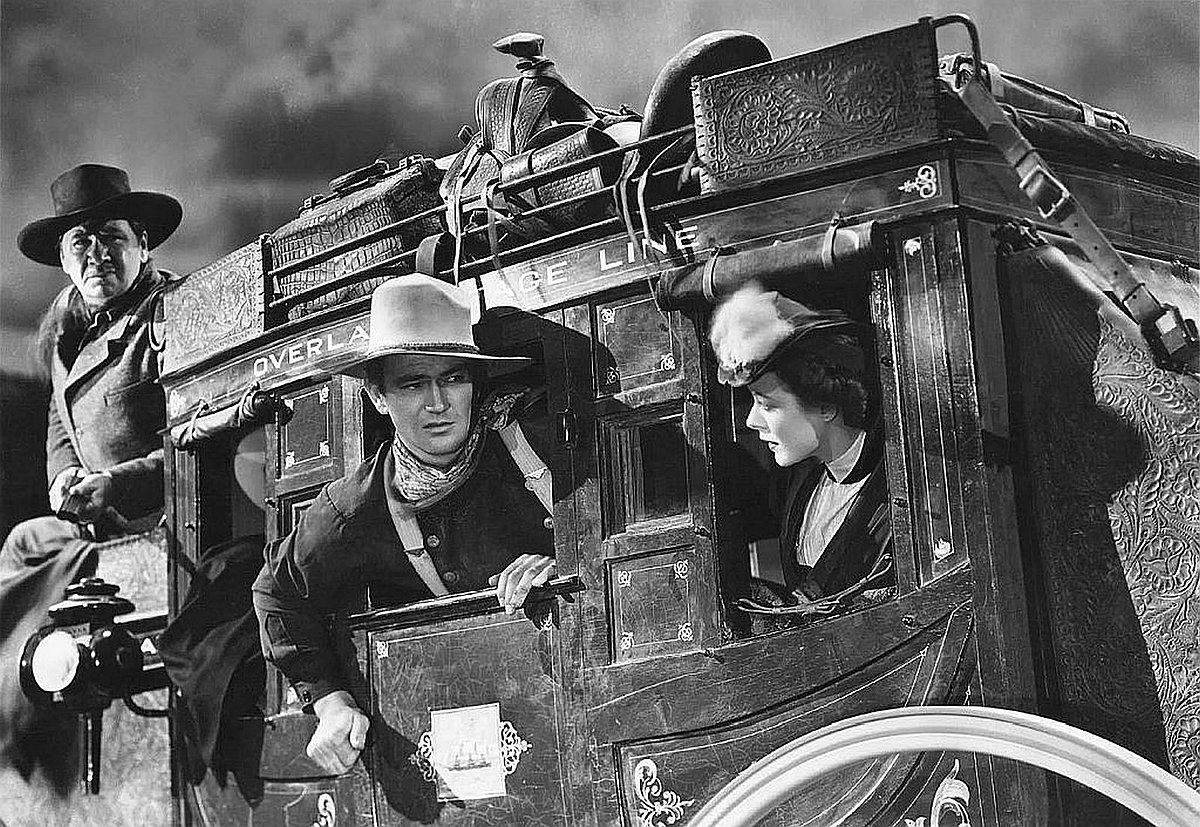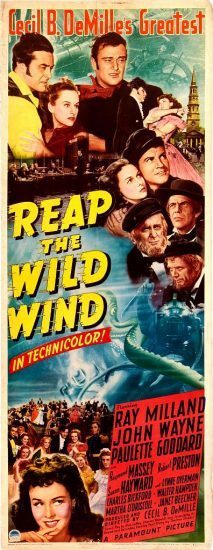
Paramount, Dir: Cecil B. DeMille, colour, 123m
Cast: Ray Milland, John Wayne, Paulette Goddard, Robert
Preston, Raymond Massey, Susan Hayward
John Wayne is, again, not the actual star of this film in a part that requires him to play a bit of a swine to be honest.
In fact, it’s the somewhat bland Ray Milland who turns out to be the hero of the story in this 1840s seafaring epic from Cecil B. DeMille. Second billed in the part of Jack Stuart, captain of a boat that founders on the rocks at the beginning of the film, JWs character starts out as a man of principle, a good man who falls in love with salvage business owner Paulette Godard.
Once Milland appears on the scene the ever-reliable love triangle of so many other films / books / plays etc. is then firmly established.
JW is found guilty of negligence and stripped of his captaincy. If you’re in the armed services and you’re found guilty of misconduct, you’re either dishonourably discharged, or court martialled or your uniform torn from you by one of your peers.
In the American Merchant Navy, it appears you’re forced to dump a small scale model of the boat you lost amongst a whole load of other model boats that represent the ships that have been ‘left to rot on the bottom’. Well, you learn something new every day.
The best I can say about the film is that it looks good.
DeMille and his cinematographer certainly know how to apply colour to a scene, something Martin Scorsese praises DeMille for in his 1956 version of The Ten Commandments.
On occasion though, I had to keep reminding myself I wasn’t watching a remake of Gone With the Wind, what with Paulette Godard playing her part as a poor man’s Scarlett O’Hara, complete with a Hattie McDaniels look-alike black hand-maiden and a ‘y’all quit that lolly-gaggin‘ round me now, ya here?’ accent.
We even get ‘fiddlesticks’, which is about as close to ‘fiddle dee dee’ as you can get without being served with a plagiarism suit by MGM.
JW goes over to the dark side when he thinks Ray Milland, who ends up owning the shipping company Duke worked for, has deliberately held back on telling him he’s going to be captain of a new ship.
In reality, Milland was the one who recommended the shipping company to keep Duke on until he could be cleared of having anything to do with the sinking of his other ship.
In an act of mistaken revenge, JW takes part in wrecking the very ship Milland had arranged for him to command.
Susan Hayward has stowed upon the boat – keep up at the back there - that JW helped to sink so, seeing as someone has died through his actions, and according to writing for film 101 and the cardinal rules of storytelling, JW must therefore himself die as well.
And die he does, giving his life to save his rival in love from a giant rubber squid and thus freeing Miss Godard to marry the wimp that is Ray Milland.
Best JW line in the film is ‘I’ll tear the jaw from your face’. The best end credit is a certain Keith Richard who apparently plays the part of Captain Carruthers.
I’m guessing this was an early try out before playing Johnny Depp’s dad in a couple of the Pirates of the Caribbean films.
It certainly lends credence to the suspicion that Keef is not of this world. If the cast list is to be believed, he was making films one year before he was actually born.
Spooky, huh?
